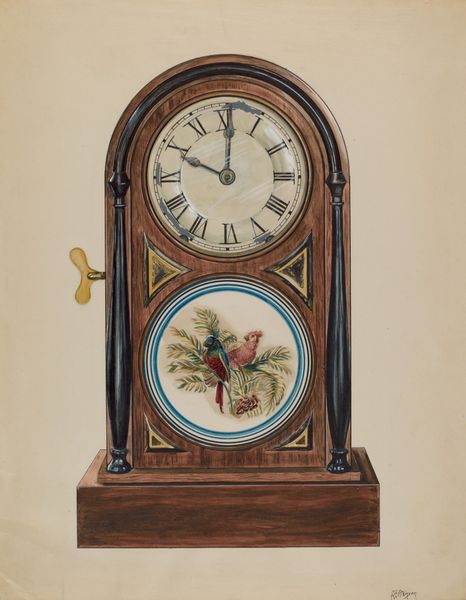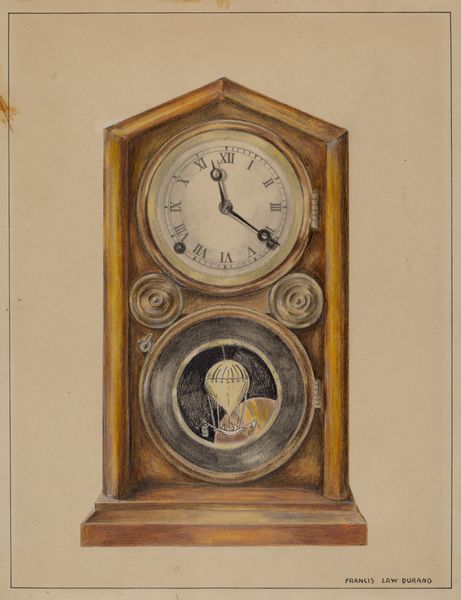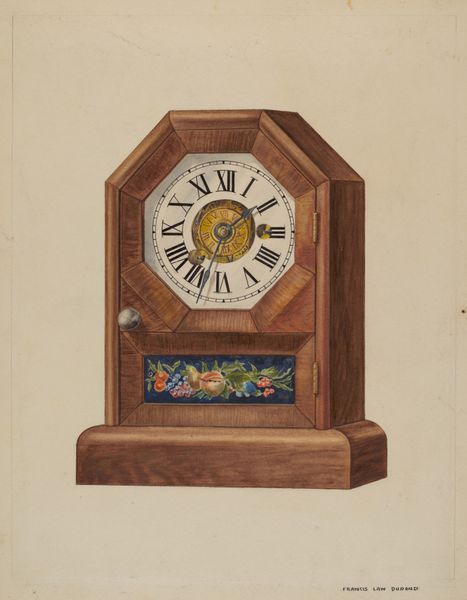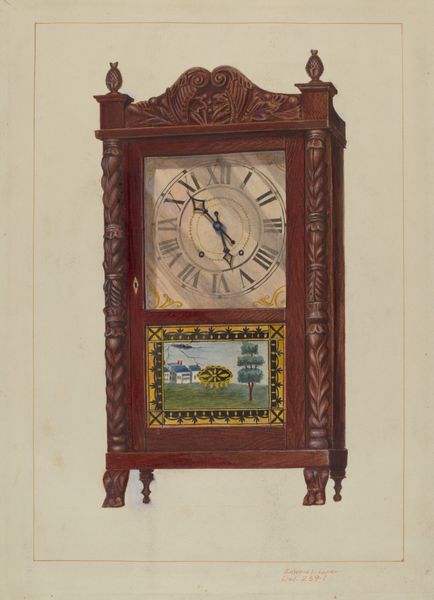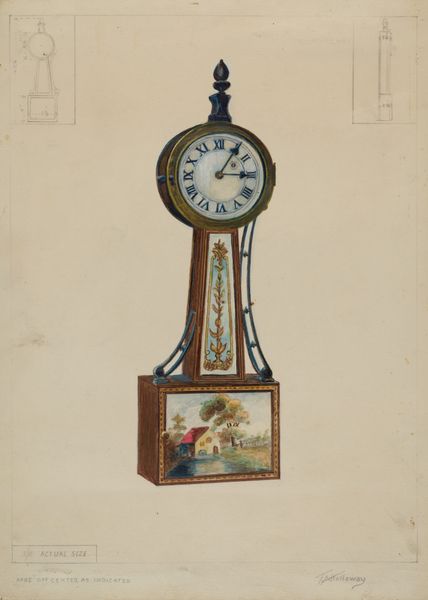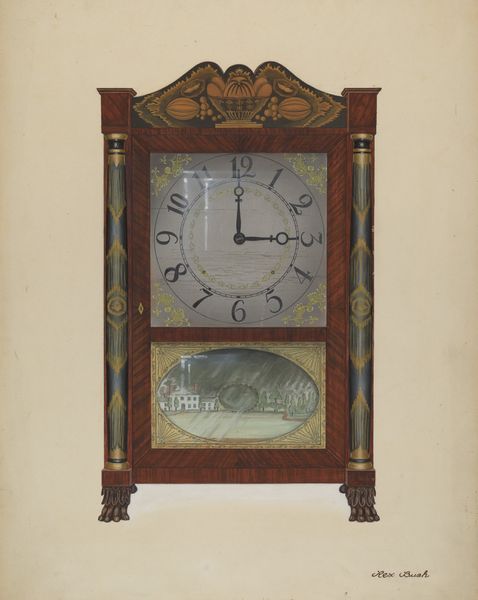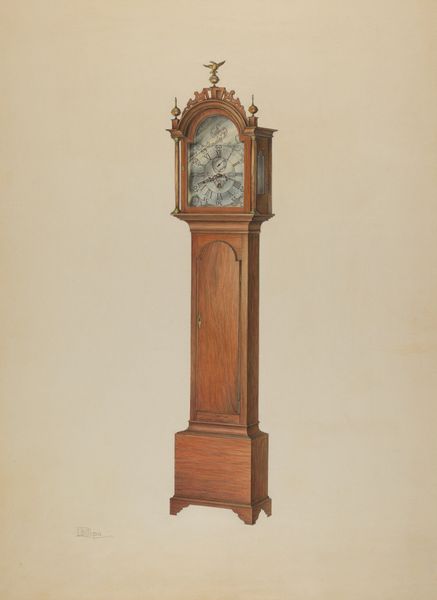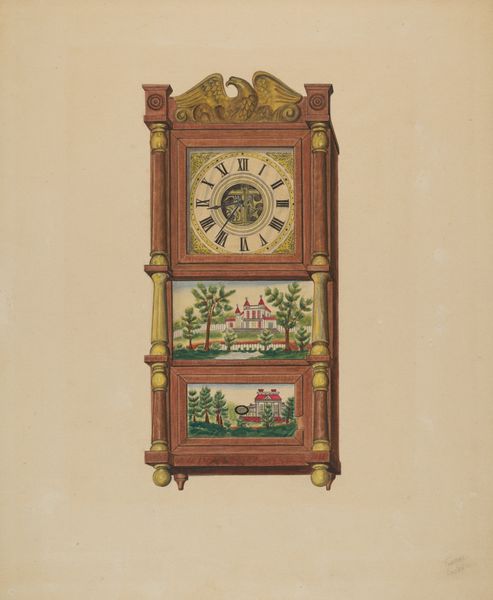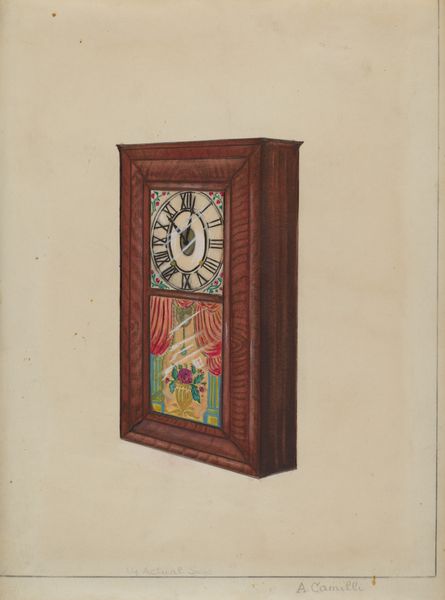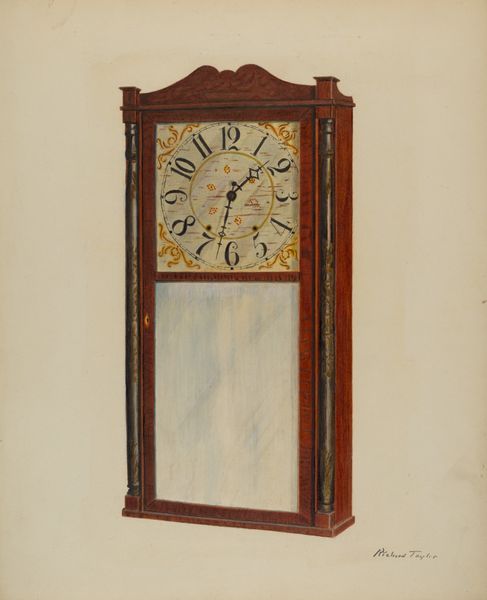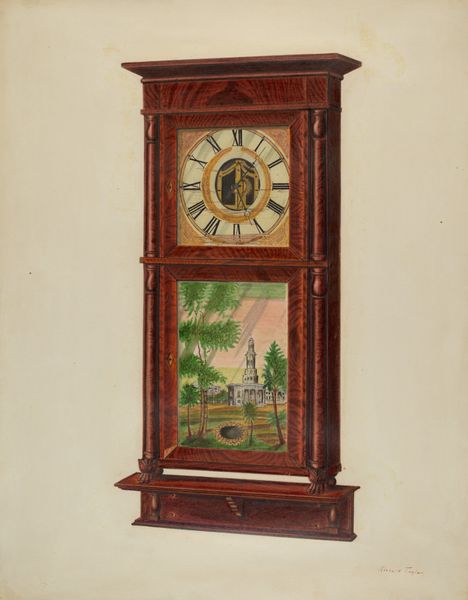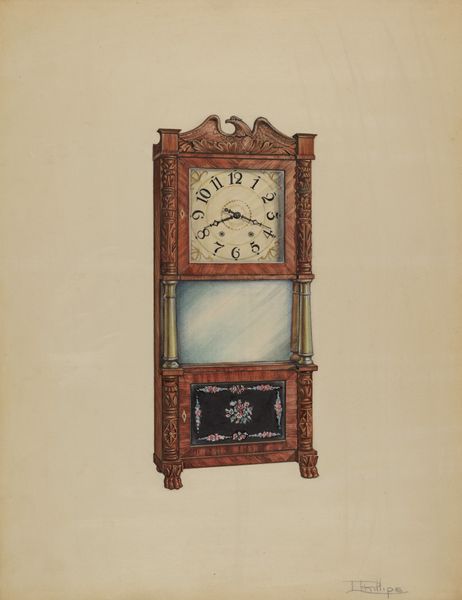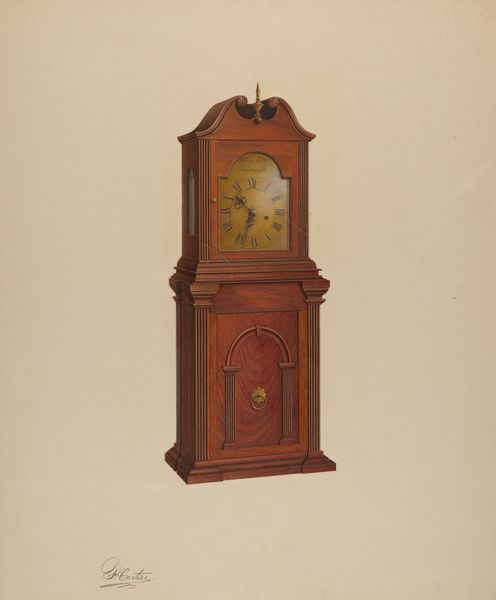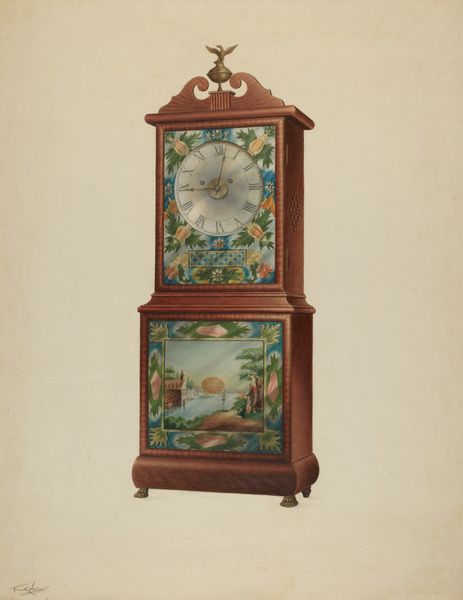
drawing, coloured-pencil, watercolor
#
drawing
#
coloured-pencil
#
water colours
#
pottery
#
watercolor
#
coloured pencil
#
cardboard
#
academic-art
#
decorative-art
Dimensions: overall: 30.2 x 22.9 cm (11 7/8 x 9 in.) Original IAD Object: 11 1/2" x 19"
Copyright: National Gallery of Art: CC0 1.0
Curator: Take a moment to observe this piece titled "Mantle Clock," circa 1936, by John Cutting. It’s rendered with watercolor and colored pencil. Editor: At first glance, it strikes me as oddly charming. There’s a contrast between the formal clock design and the almost folk-art-like floral panel below the clock face. The textures implied by the use of watercolor and coloured-pencil suggests cardboard or something similar... intriguing! Curator: Exactly, and this object reveals an interesting confluence of artistic, design, and social currents. During this period, design started becoming more aware of function and everyday need. How were these domestic objects influencing domestic life? Editor: I agree completely. The material suggests it was either a design for, or perhaps, an amateur rendering, suggesting its democratic spirit of utility. You know, colored pencil, particularly in the mid-20th century, had a strong foothold in the making of industrial design drawings, too. What kind of audience were such clock designs reaching? Curator: These objects helped disseminate popular notions of aesthetics through domestic material culture and fueled both commercial growth and aspirational ideals of homemaking in general. Its an object made by hands and machines. What is particularly striking, in the context of art history is that it defies simple categorization – high art, craft, design, its neither and all. Editor: Right. And the decoration itself - the flowers against what seems to be wicker work or a very rough weave feels deliberately "of the people," maybe meant to imply hand-made design or something similar that consumers may crave from commercial designs. Curator: That combination speaks to the era's focus on integrating art and life, where decorative objects had the potential to uplift everyday experience, offering comfort during times of widespread uncertainty. Editor: It’s that blend, that push-and-pull, between industrialization and an imagined pastoral past that really makes it worth exploring, and also prompts us to reflect what labor produced it! Curator: Indeed, John Cutting's work urges us to consider the evolving place of art in society. Editor: Absolutely, and to think about how these “lesser” objects tell significant social histories.
Comments
No comments
Be the first to comment and join the conversation on the ultimate creative platform.
